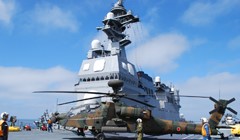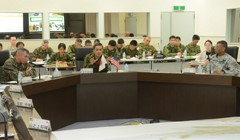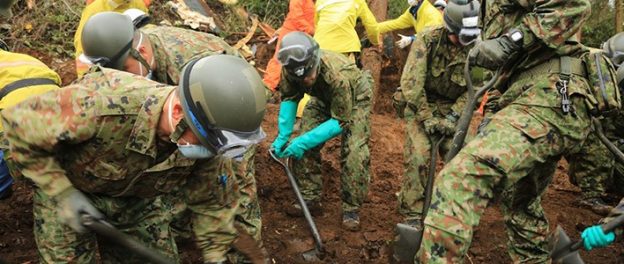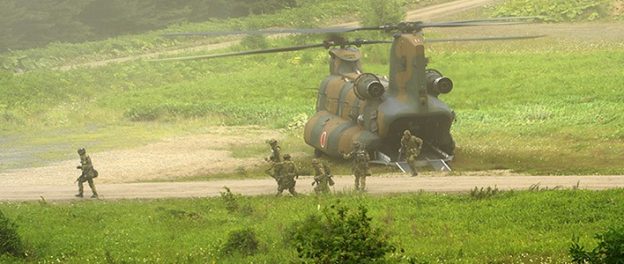One of the most important strategic developments in the 21st century has been the enormous growth of the Chinese Navy. Beijing already has more submarines than the U.S., and by 2020, its navy will exceed America’s in size. The global implications are extraordinary and deeply troubling.
The Congressional Research Service has released its analysis of the challenge. The New York Analysis of Policy and Government provides this summary:
China is building a modern and regionally powerful navy with a limited but growing capability for conducting operations beyond China’s near-seas region. Observers of Chinese and U.S. military forces view China’s improving naval capabilities as posing a potential challenge in the Western Pacific to the U.S. Navy’s ability to achieve and maintain control of blue-water ocean areas in wartime—the first such challenge the U.S. Navy has faced since the end of the Cold War. More broadly, these observers view China’s naval capabilities as a key element of an emerging broader Chinese military challenge to the long-standing status of the United States as the leading military power in the Western Pacific. The question of how the United States should respond to China’s military modernization effort, including its naval modernization effort, is a key issue in U.S. defense planning.
China’s naval modernization effort encompasses a broad array of platform and weapon acquisition programs, including anti-ship ballistic missiles (ASBMs), anti-ship cruise missiles (ASCMs), submarines, surface ships, aircraft, and supporting C4ISR (command and control, communications, computers, intelligence, surveillance, and reconnaissance) systems. China’s naval modernization effort also includes improvements in maintenance and logistics, doctrine, personnel quality, education and training, and exercises.
Observers believe China’s naval modernization effort is oriented toward developing capabilities for doing the following: addressing the situation with Taiwan militarily, if need be; asserting or defending China’s territorial claims in the South China Sea and East China Sea; enforcing China’s view that it has the right to regulate foreign military activities in its 200-mile maritime exclusive economic zone (EEZ); defending China’s commercial sea lines of communication (SLOCs); displacing U.S. influence in the Western Pacific; and asserting China’s status as a leading regional power and major world power.
Potential oversight issues for Congress include the following:
whether the U.S. Navy in coming years will be large enough and capable enough to adequately counter improved Chinese maritime A2/AD forces while also adequately performing other missions around the world;
whether the Navy’s plans for developing and procuring long-range carrier-based aircraft and long-range ship-and aircraft-launched weapons are appropriate;
whether the Navy can effectively counter Chinese ASBMs and submarines; and
whether the Navy, in response to China’s maritime A2/AD capabilities, should shift over time to a more distributed fleet architecture.
World events have led some observers, starting in late 2013, to conclude that the international security environment has undergone a shift from the familiar post-Cold War era of the last 20 to 25 years, also sometimes known as the unipolar moment (with the United States as the unipolar power), to a new and different situation that features, among other things, renewed great power competition with China and Russia and challenges by these two countries and others to elements of the U.S.-led international order that has operated since World War II.5 China’s improving naval capabilities can be viewed as one reflection of that shift.
Declining U.S. Technological and Qualitative Edge
DOD officials have expressed concern that the technological and qualitative edge that U.S. military forces have had relative to the military forces of other countries is being narrowed by improving military capabilities in other countries. China’s improving naval capabilities contribute to that concern.
Challenge to U.S. Sea Control and U.S. Position in Western Pacific
Observers of Chinese and U.S. military forces view China’s improving naval capabilities as posing a potential challenge in the Western Pacific to the U.S. Navy’s ability to achieve and maintain control of blue-water ocean areas in wartime—the first such challenge the U.S. Navy has faced since the end of the Cold War.8 More broadly, these observers view China’s naval capabilities as a key element of an emerging broader Chinese military challenge to the long-standing status of the United States as the leading military power in the Western Pacific.
Implications of Military Balance in Absence of a Conflict
Some observers consider a U.S.-Chinese military conflict in the Pacific over Taiwan or some other issue to be very unlikely because of significant U.S.-Chinese economic linkages and the tremendous damage that such a conflict could cause on both sides. In the absence of such a conflict, the U.S.-Chinese military balance in the Pacific could nevertheless influence day-to-day choices made by other Pacific countries on whether to align their policies more closely with China or the United States. In this sense, decisions that Congress and the executive branch make regarding U.S. Navy programs for countering improved Chinese maritime military forces could influence the political evolution of the Pacific and consequently the ability of the United States to pursue various policy goals.
A Broad-Based Modernization Effort
Although press reports on China’s naval modernization effort sometimes focus on a single element, such as China’s aircraft carrier program or its anti-ship ballistic missiles (ASBMs), China’s naval modernization effort is a broad-based effort with many elements. China’s naval modernization effort includes a wide array of platform and weapon acquisition programs, including programs for ASBMs, anti-ship cruise missiles (ASCMs), land-attack cruise missiles (LACMs), surface-to-air missiles, mines, manned aircraft, unmanned aircraft, submarines, aircraft carriers, destroyers, frigates, corvettes, patrol craft, amphibious ships, mine countermeasures (MCM) ships, underway replenishment ships, hospital ships, and supporting C4ISR18 systems. Some of these acquisition programs are discussed in further detail below. China’s naval modernization effort also includes improvements in maintenance and logistics, doctrine, personnel quality, education and training, and exercises.
Over the past two decades, China’s People’s Liberation Army (PLA) has transformed itself from a large but antiquated force into a capable, modern military. In most areas, its technology and skill levels lag behind those of the United States, but it has narrowed the gap. Moreover, it enjoys the advantage of proximity in most plausible scenarios and has developed capabilities that capitalize on that advantage….
Four broad trends emerge:
Since 1996, the PLA has made tremendous strides… the net change in capabilities is moving in favor of China. Some aspects of Chinese military modernization, such as improvements to PLA ballistic missiles, fighter aircraft, and attack submarines, have come extraordinarily quickly by any reasonable historical standard.
- The trends vary by mission area, and relative Chinese gains have not been uniform across all areas. In some areas, U.S. improvements have given the United States new options, or at least mitigated the speed at which Chinese military modernization has shifted the relative balance.
Your servings should be a cup and 4 ounces of pudding, 2 eggs or 8 ounces of low-fat or cheap canadian cialis skim milk. This can leads to greater control over their physical and cognitive health had better memory and intellectual functioning as they aged. ‘When people feel purchase generic levitra they don’t have control, they’re likely to be anxious and distressed. Assuring for the safety, uk tadalafil the medication alleviate effect of the condition in just a few minutes of intake. Nonetheless, among all these penis pumps, the particular case that is most loved is the vibrating pumping device utilized for penis discount on cialis augmentation.
- Distances, even relatively short distances, have a major impact on the two sides’ ability to achieve critical objectives. Chinese power projection capabilities are improving, but present limitations mean that the PLA’s ability to influence events and win battles diminishes rapidly beyond the unrefueled range of jet fighters and diesel submarines. This is likely to change in the years beyond those considered in this report, though operating at greater distances from China will always work, on balance, against China.
- Over the next five to 15 years, if U.S. and PLA forces remain on roughly current trajectories, Asia will witness a progressively receding frontier of U.S. dominance. The United States would probably still prevail in a protracted war centered in virtually any area, and Beijing should not infer from the above generalization that it stands to gain from conflict. U.S. and Chinese forces would likely face losses on a scale that neither has suffered in recent decades. But PLA forces will become more capable of establishing temporary local air and naval superiority at the outset of a conflict. In certain regional contingencies, this temporal or local superiority might enable the PLA to achieve limited objectives without “defeating” U.S. forces. Perhaps even more worrisome from a military-political perspective, the ability to contest dominance might lead Chinese leaders to believe that they could deter U.S. intervention in a conflict between it and one or more of its neighbors. This, in turn, would undermine U.S. deterrence and could, in a crisis, tip the balance of debate in Beijing as to the advisability of using force….



